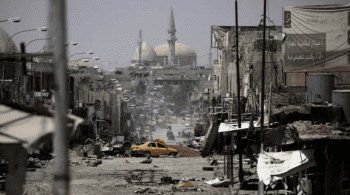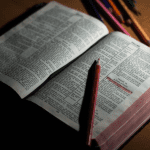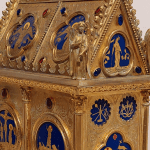According to reports, archeological workers restoring the historic Syriac Orthodox Mar Thomas Church in Iraq’s capital Mosul, have discovered about a dozen ancient relics and parchments connected to several saints. The church was heavily damaged by Islamic State fighters almost four years ago.
The relics include manuscripts in Syriac and Aramaic as well as six stone containers wrought with Aramaic inscriptions. Some relate to Saint Theodore, Saint Simon, Mor Gabriel, Saint Simeon, and other well-known figures, the U.S.-based persecution watchdog International Christian Concern said.
One of the stone containers carried an inscription relating to Saint Theodore, a Roman soldier born in the province of Corum, Turkey, in the third century CE and beheaded for having converted, The Jerusalem Post said, citing a report by AsiaNews.
Some containers are related to Saint Simon “the Zealot,” a first-century apostle of Jesus; Mor Gabriel, bishop of the Tur Abdin hilly region situated in southeast Turkey from 593 to 668 CE, the Post continued.
The discovery also includes “relics of Saint Simeon the Wise from the first century CE, who, according to Christian tradition, welcomed the infant Jesus in the Jewish Temple of Jerusalem. Workers also found relics of Saint John, one of the first apostles of Jesus, also known by his Hebrew name Yohanan ben Zavdi, and relics of celebrated writer and Syrian Orthodox Regional Primate Saint Gregory Bar Hebraeus, who served in the position from 1264-1286 CE,” it added.

“The discovery of the hidden relics at this church is another encouraging development in the broad effort to restore and protect Christian cultural heritage in Iraq after the damage done by the Islamic State,” ICC added.
The watchdog noted that the International Alliance for the Protection of Heritage in Conflict Areas, collaborating with the Iraqi government, put $328,000 toward the project, which began last year to repair the damage done by IS in the battle of Mosul. “Reviving the Spirit of Mosul,” a restoration plan by UNESCO, is also underway, ICC said, adding that it involves more than $100 million.
ICC commented, “Perhaps workers will uncover more undiscovered pieces of history as they sort through the archeological remains of Christianity’s long history in Iraq.”
In 2017, Iraqi militiamen, who took control of the ancient city of Hatra from Islamic State fighters, found that the terror group had destroyed relics dating back more than 2,000 years.
Hatra is a UNESCO-listed World Heritage site and considered an archeological jewel of Iraq and the capital of the first Arab kingdom.
“The sculptures and engraved images are destroyed, but the walls and towers of the kingdom of Hatra remain standing,” Voice of America quoted Marwa Rashid, a spokeswoman for Iraq’s Shi’ite Popular Mobilization Forces militia, as saying at the time. “There are many holes and scratches on the walls of the kingdom due to IS bullets.”
In a video released by IS after Hatra’s occupation, its fighters were seen damaging sculptures with sledgehammers and destroying images and artifacts on ancient walls with assault rifles. As per Iraq’s 1987 census, there were 1.5 million Christians in Iraq, but their numbers dramatically decreased to 141,000, according to a recent report.


